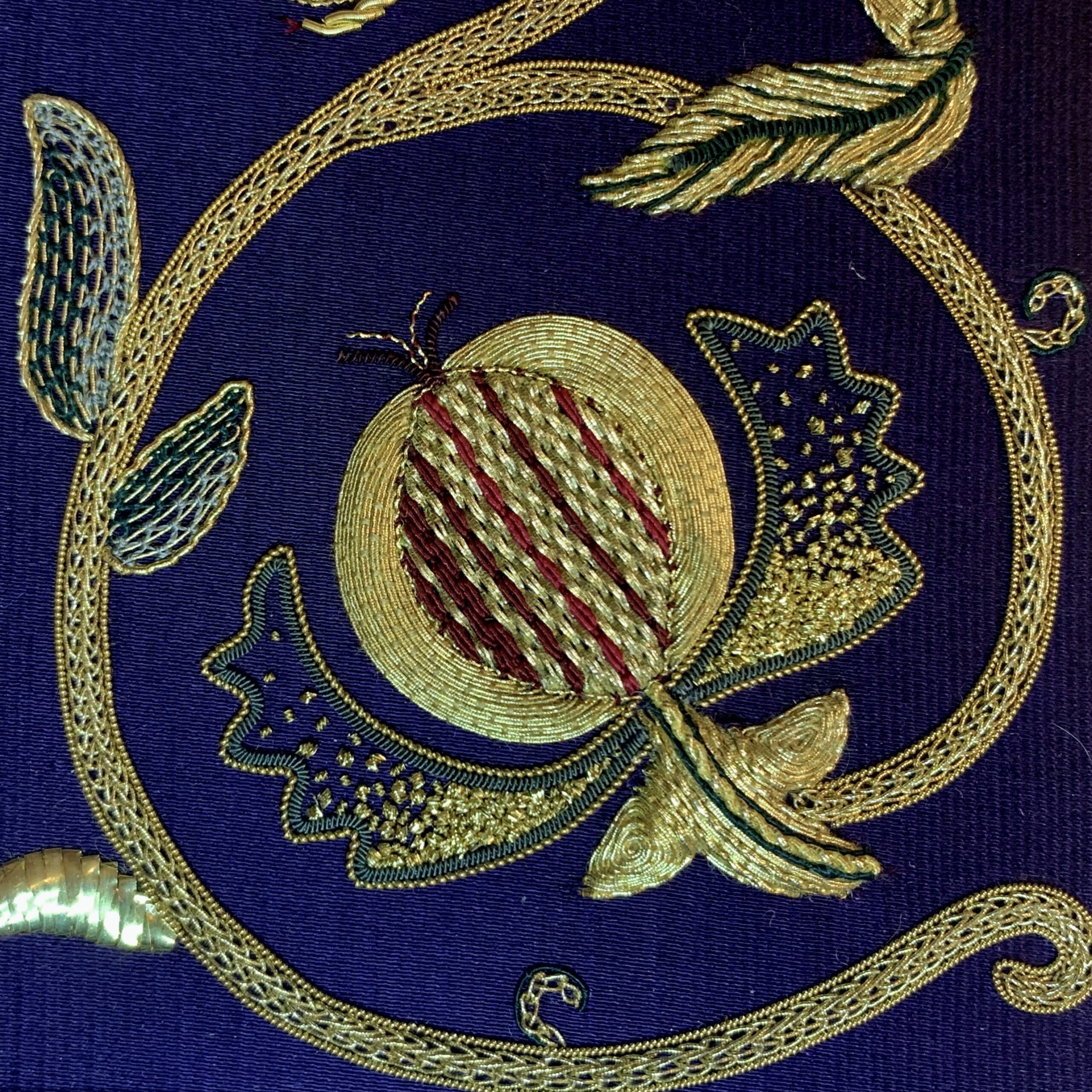
I have been working on my 17th Century Thistle Threads Casket while also working on the Royal School of Needlework Embroidery Diploma. It is no surprise that the two projects intersect now and then. Certainly my casket panels have improved from my classes at the RSN.

My Advanced Goldwork piece for the RSN is based on classical Elizabethan design found on the inner door of a 17th century casket in the V&A collection. The stitch plan completely deviates from the V&A embroidery. My involvement with the Thistle Threads community has lead to my acquiring many unique materials. Many of these threads are “Goldwork” threads that are actually covered in silk. I felt this was a great way to introduce some bits of color to the piece and have a fun time experimenting this some of my stash.
I wanted the color to integrate seamlessly with the goldwork. To achieve this plan, I introduced silk covered Rococo, silk purl, silk plate, and silk gimp (to mix with the gilt passing). I used all historically accurate real metal threads in my design, which are already taking on a pleasant natural patina. For this reason, I avoided the Japanese threads.
As with all the RSN Certificate and Diploma class projects, the piece is really a sampler, but in this case, I repeated many of the elements if they represented the same item. For example. all the Honeysuckle petals are the same technique. This preserved the elegance of the Elizabethan design. In addition to the required techniques, I also added Elizabethan braid and Or Nué. To add some additional interest, I added corded buttonhole as this technique was perfect for integrating the silk and metallic threads together.
I also chose to do this design on a more historically accurate gauge. The passing I used for example was a size #3 instead of the tradition #6 used today. This did cause some design aggravation to fit in the required amount of plate work. The plate is very shiny, and I was afraid it would distract from the piece. I split the plate into 3 pieces, to balance the sheen of the plate throughout the piece. I then did the two small leaves to show my capabilities in laying plate. With the 3rd and larger leaf, I laid the traditional plate with a piece of silk plate next to it. I changed the orientation of the two pieces, as I progressed up the leaf. I was extremely happy with the results and will definitely use this technique in the future.
I stitched the piece on a slightly textured silk with a heavy warp in a deep purple. I chose a Pomegranate and a Honeysuckle for the design instead of other flowers to limit the colors to only green and red/pink accents. The simple color scheme was chosen to highlight the design but not distract. This also allowed me to easily balance the colors throughout the design, despite its small size. I loved my final embroidery and it was very fun to try a few new threads and techniques.

Thread List:
- Gilt passing
- Pearl purl
- Bright check
- Smooth check
- Wire check
- Rococo
- 1 1/2 Gilt twist
- Braod plate
- Kid leather
- Specialty Grecian twist
- Au ver a soie silk
- Silk gimp
- Silk plate
- Silk purl
Stitches and Techniques:
- Elizabethan braid
- Or Nué
- Corded buttonhole
- Bullion knots
- Basket weave
- S-ing
- Cutwork
- Brick stitched passing
- Chipwork
- Platework
- Chain stitch
